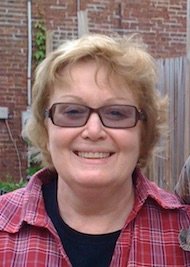
Mary McTamaney
By Mary McTamaney
This weekend, the sounds of bagpipes are likely to drift past your ears as you watch TV, listen to the car radio, or attend one of the area’s many corned beef and cabbage fundraising dinners.
Folks will be sporting their green clothing and shamrocks will be the logo for sales events everywhere. March 17th is the Feast of Saint Patrick, patron saint of Ireland, who only legend claims drove all snakes from his island home. Our community does have snakes emerging into the warm days of spring, but the Irish settled in our area nonetheless. They came, as all immigrants, to make a better life than their impoverished old country could ever offer them.
Like all new arrivals, it took time for the great “melting pot” to blend new people and accept their accents and habits. They endured jokes and stereotyping. At the height of Irish immigration in the mid 1800’s, the cartoon shown here was printed in the local Newburgh newspaper every week. It illustrated a tobacco shop’s products but was certainly offensive to newcomers as the stereotype of the Irish being wild disheveled leprechauns. Yet, they settled in and made their way in their adopted land. Newburgh’s two Medal of Honor recipients in the Civil War were Irishmen: Dennis Hickey and William Dickey. Each had a harrowing war experience that deserved praise for the lives saved.
Much of Newburgh’s business growth and the 19th century success the city achieved were due to the innovations and hard, hard work of its Irish immigrant residents. Heartbreak is woven into their stories as poverty, disease and accidental deaths during their labors overtook many who were making their start in this new place. My family and my husband’s have roots in Newburgh’s old fourth ward along the Hudson River. Indeed, the neighborhood along North Water Street was nicknamed “Limerick” for the number of poor Irish workers who filled the rooming houses and cold-water flats of that ward. They carried water to railroad workers, stood at the spindles and looms in the cotton factory, and swept out the warehouses along the docks as they stacked barrels and boxes. My grandmother lived to be 83, the only member of her family to reach old age. Moving out of the family tenement at age 13 to be a live-in house servant probably saved her, as hard and lonely as the work was. Her parents and brother and sister all succumbed to disease that swept through close quarters in those old tenements. My husband’s great-uncle drowned in the Hudson while unloading a barge along the shore of the fourth ward.
Yet, many Irish immigrants survived and ultimately thrived. William Lynn, for example, ended his days in Newburgh at the nice home he built at 21 South Miller Street as an elder of the Presbyterian Church, a leader in the Newburgh Bible Society and a respected member of Newburgh society. His origins were far different in County Antrim, Ireland where he was the only surviving child of his farmer parents. He left when he turned 21 and embarked on a six-week sail from Belfast with less than $10 for his voyage and his new start in New York.
He worked in Newburgh as a day laborer, a groundskeeper in Balmville, a worker in an oilcloth factory. He bought a horse and wagon and parlayed his delivery route for farm produce into a farm stand, a produce store, a full three-story brick grocery and meat market which he built on Second Street and finally a shipping concern sending live sheep and cattle to market in Manhattan and Brooklyn. Mr. Lynn is one story among hundreds. Newburgh’s first Mayor after the city incorporated (we had been a village with a Village President before) was an Irishman, George Clark, a painter’s apprentice who rose up the workforce, opened his own store and rose to not only to be mayor but a personal friend of fellow veteran Ulysses S. Grant whom he hosted at his Newburgh home in 1869.
Patrick Delany came to America as a boy from County Kilkenny. He found a job as an apprentice in a foundry and developed great skills with all the tools of that trade. The massive brick building complex at the corner of Renwick and Colden Streets is the result of his enterprise. That building was Delany Boiler Works, a foundry and machine shop that he founded and where he employed hundreds of immigrant laborers following his footsteps into America. The big doorways of Apple Valley Cross-Fit and Color Cube printing company once opened to the sounds of hammers, wrenches and rivet guns as men with various accents called to each other across heavy sheets of metal.
Scenic Hudson, the well-known conservation organization, profiles aspects of the valley’s history in its journal, Viewfinder. This month, history of the Irish in the Hudson Valley is a feature. The illustrated story begins with a photo of the mechanics of Delany Boiler Works standing on and in one of their creations in the doorway on South Colden Street. It’s worth a look and worth a read: scenichudson.org/viewfinder/how-irish-immigrants-helped-build-the-hudson-valley/.